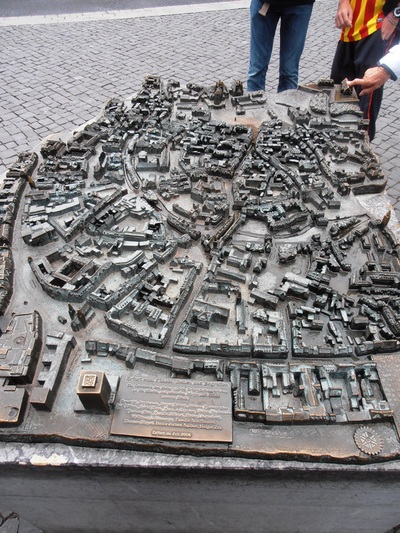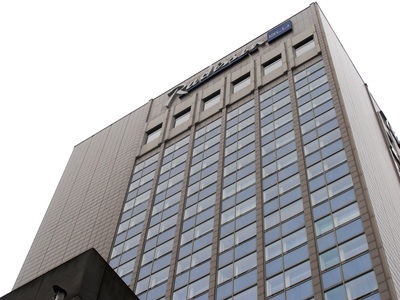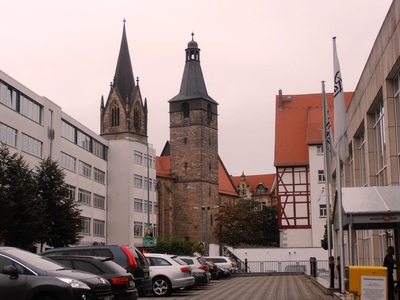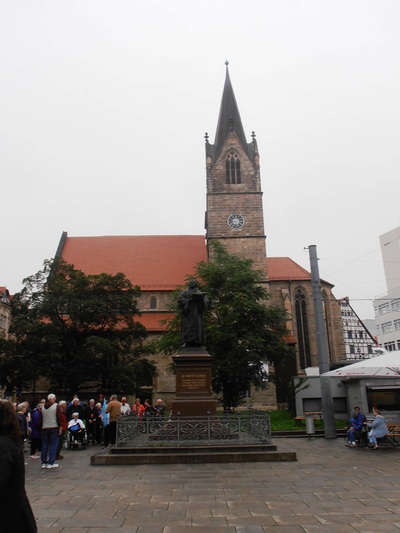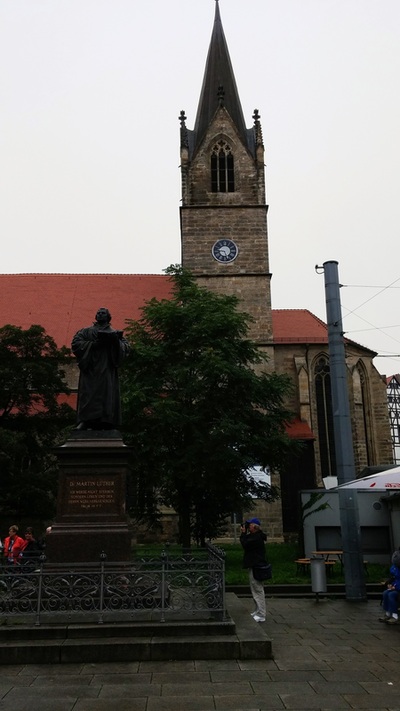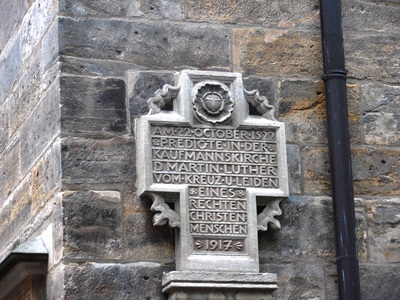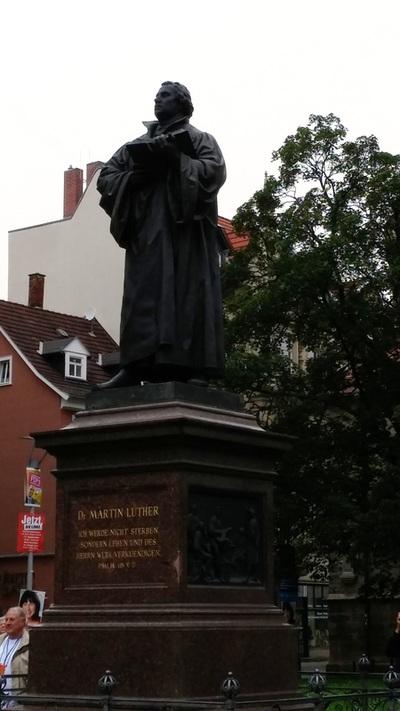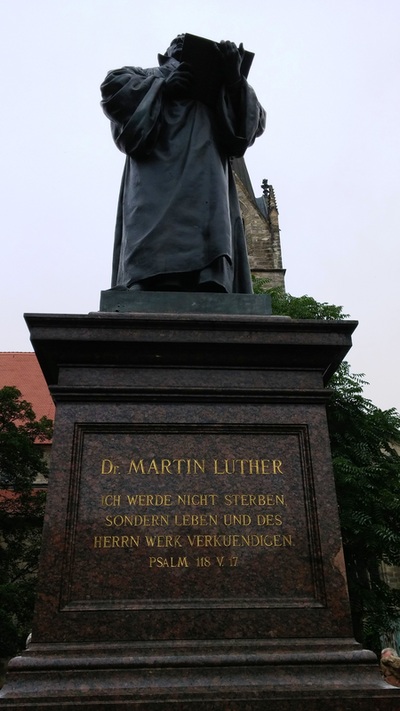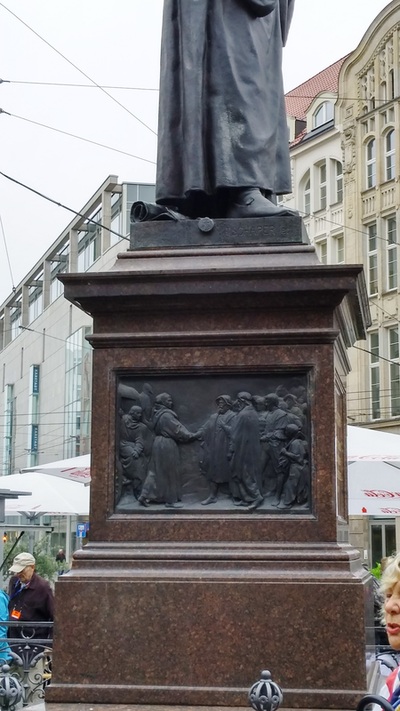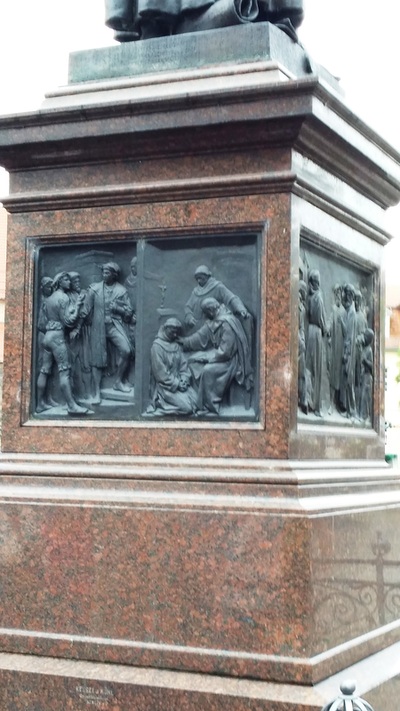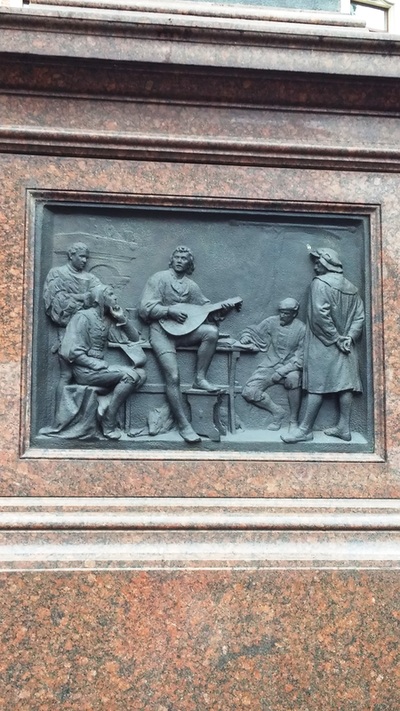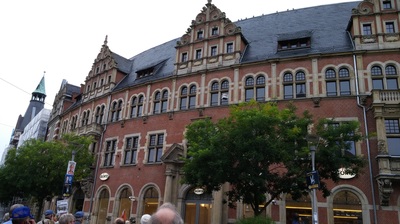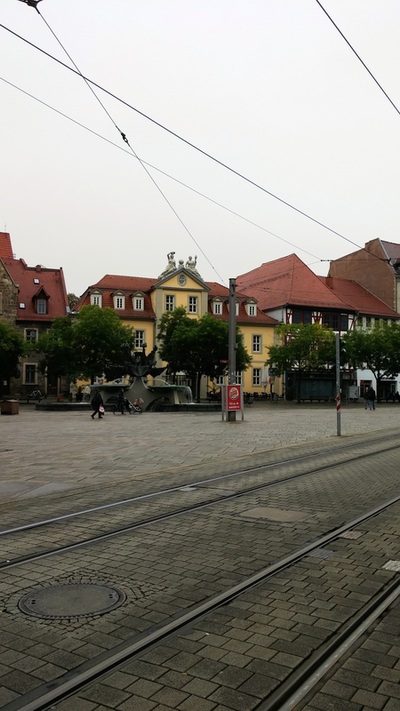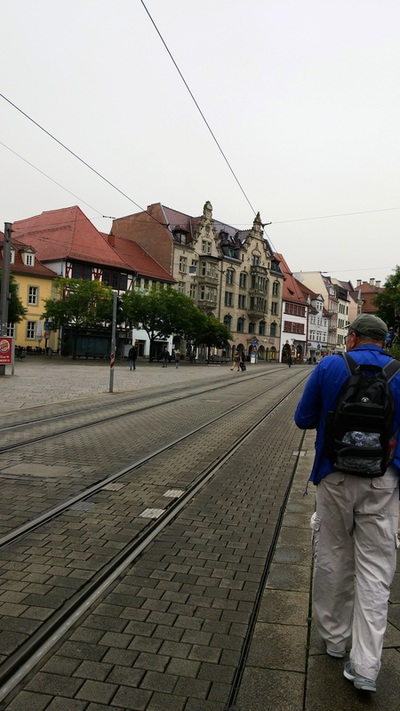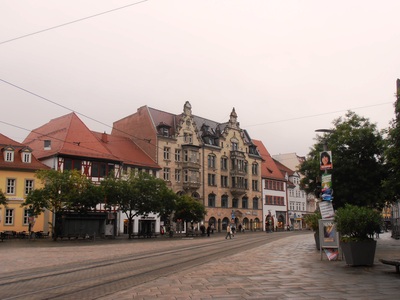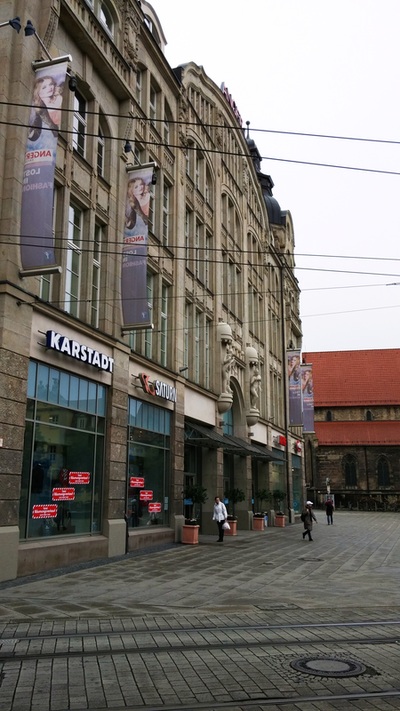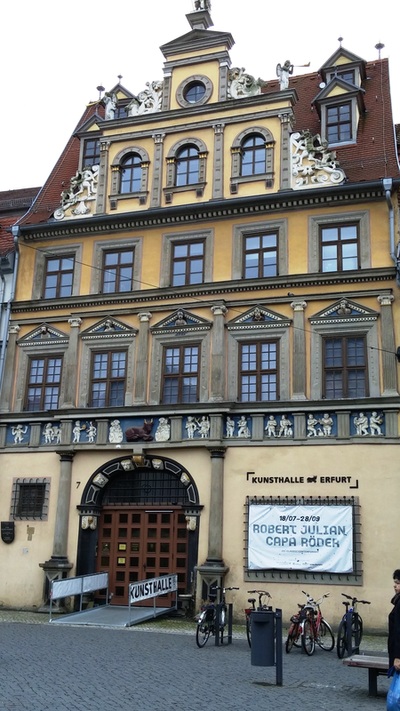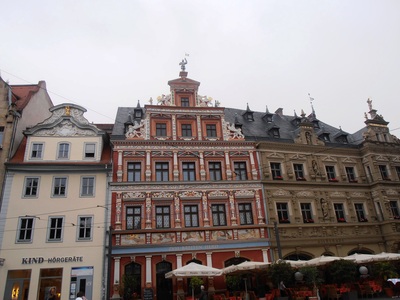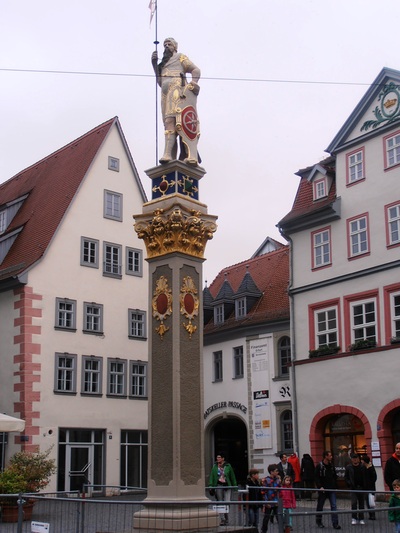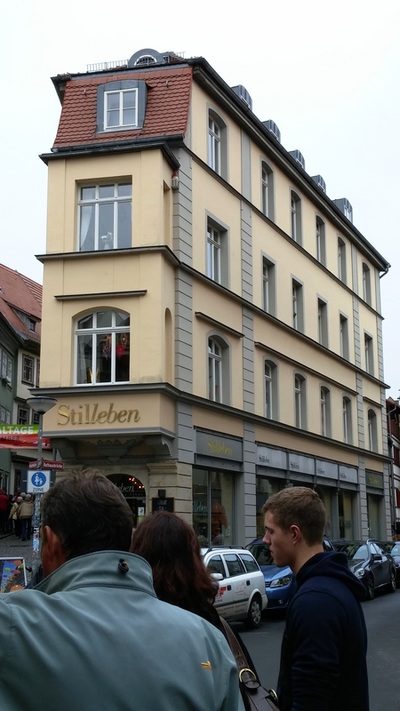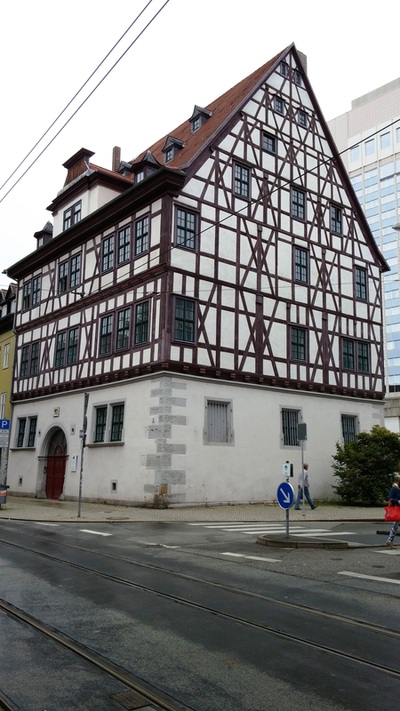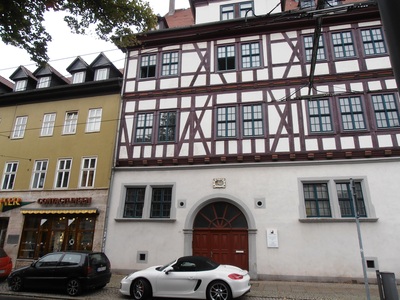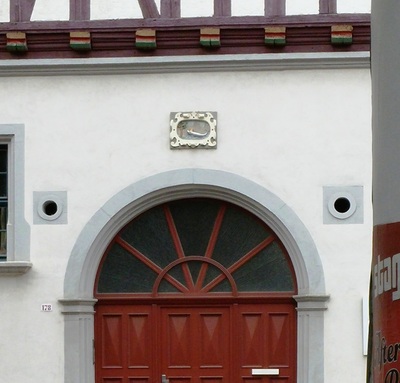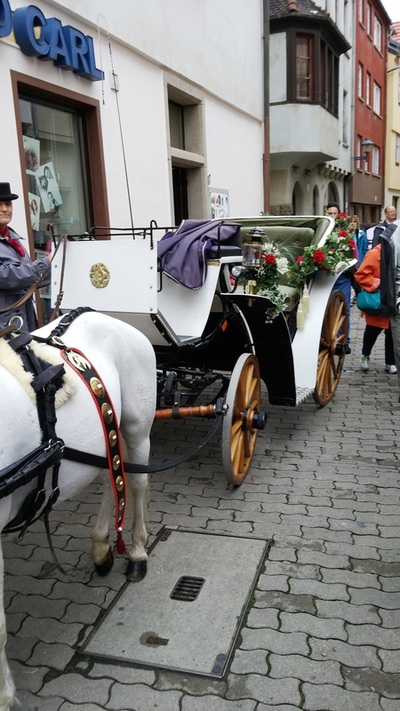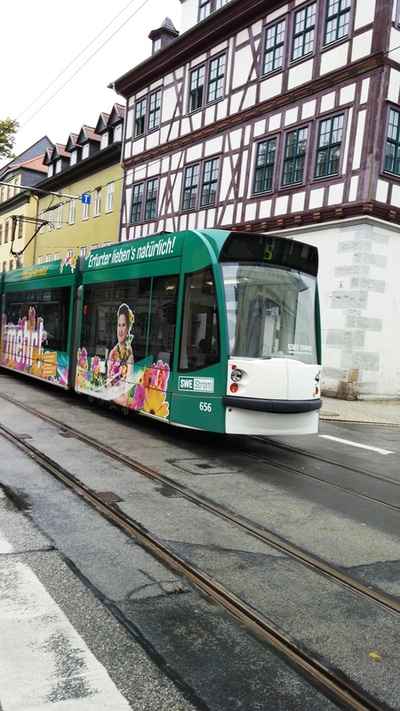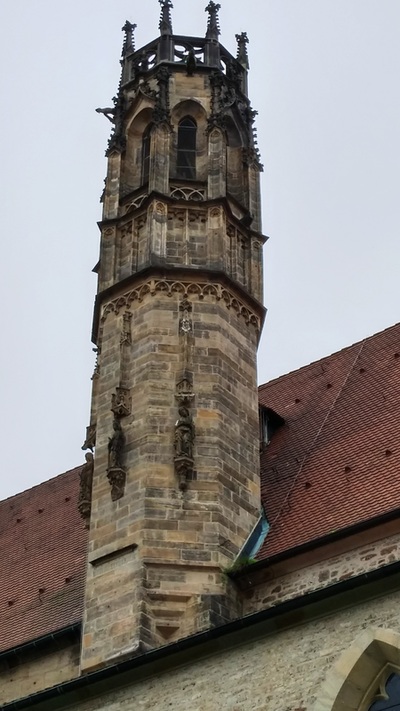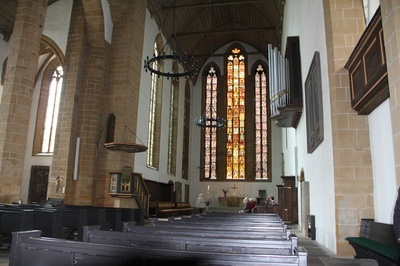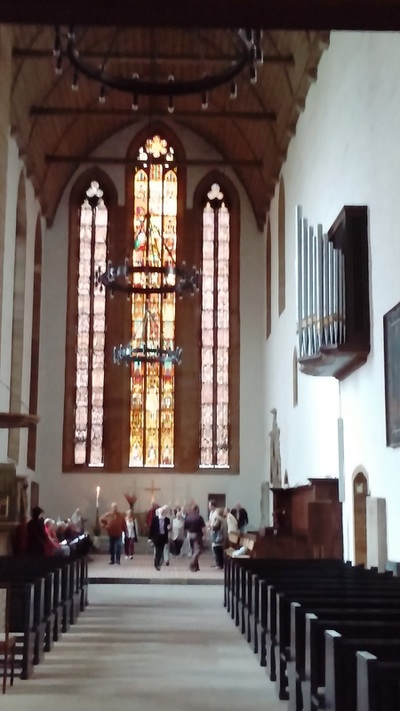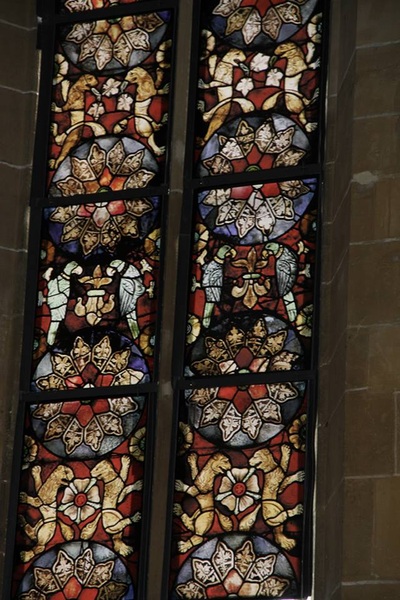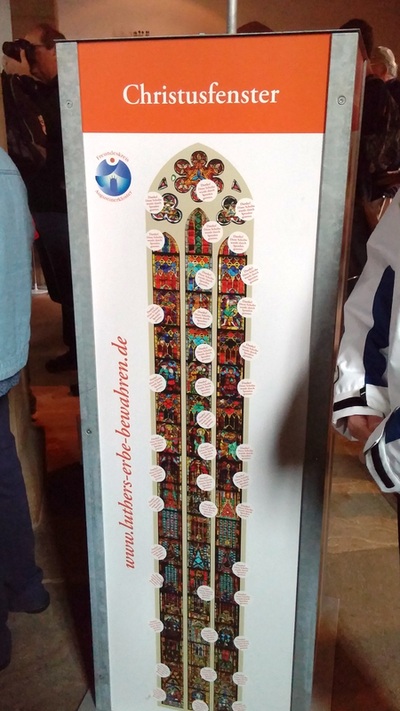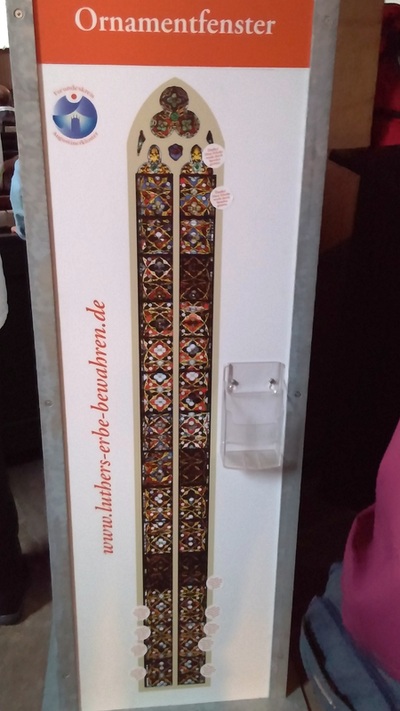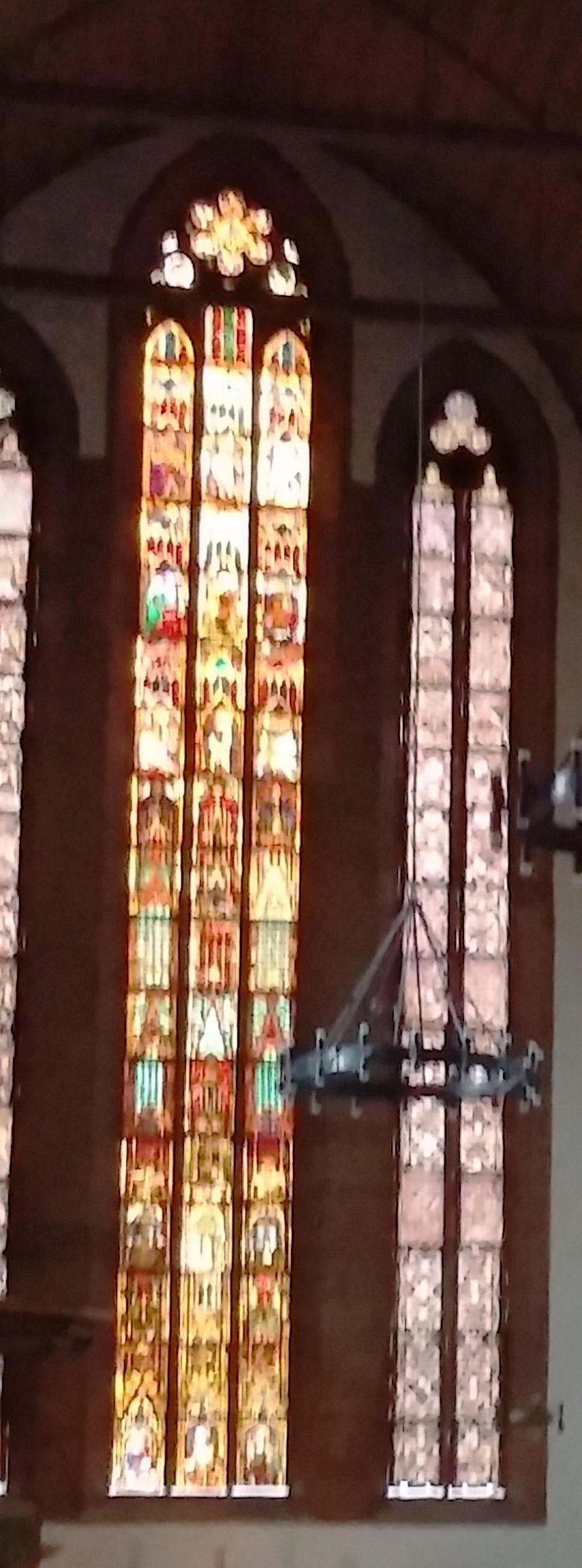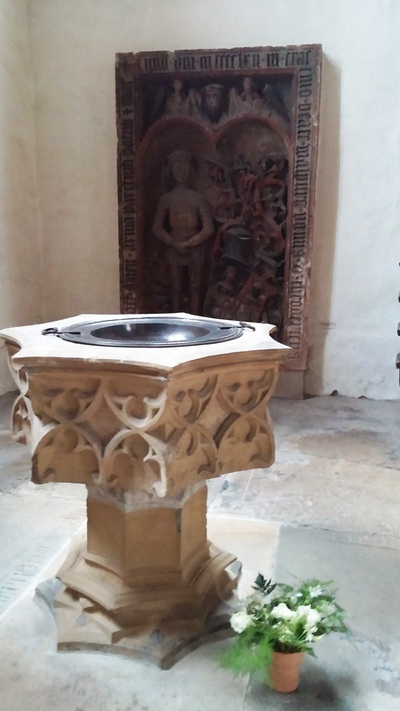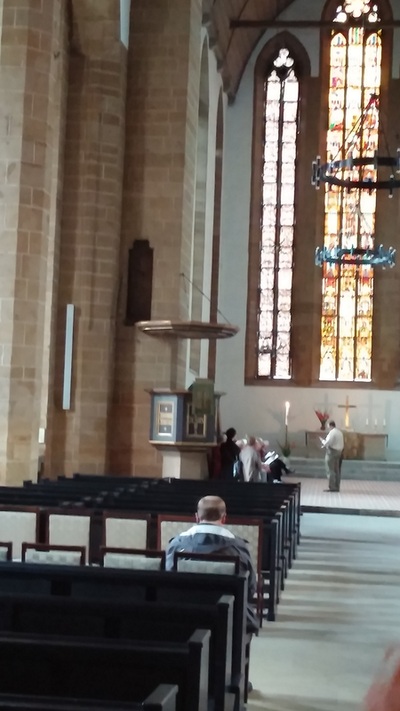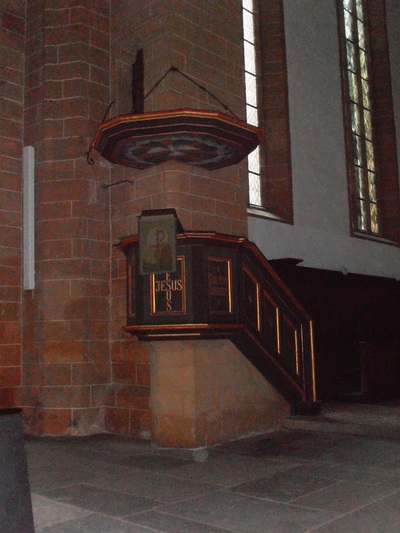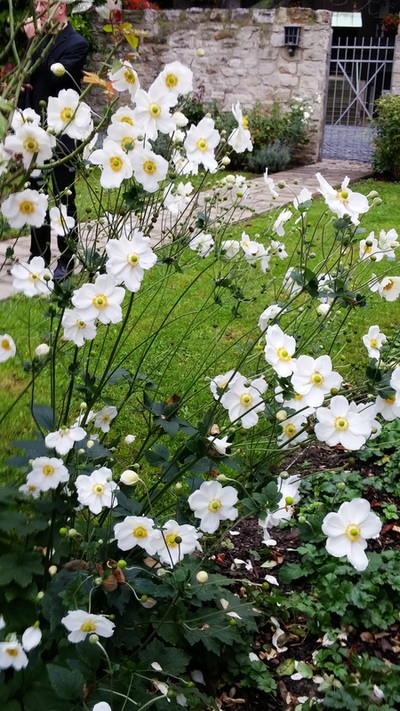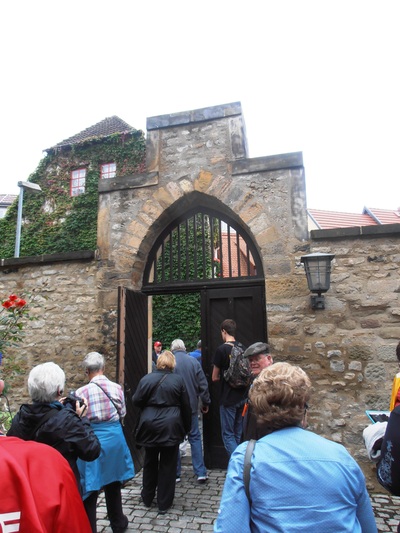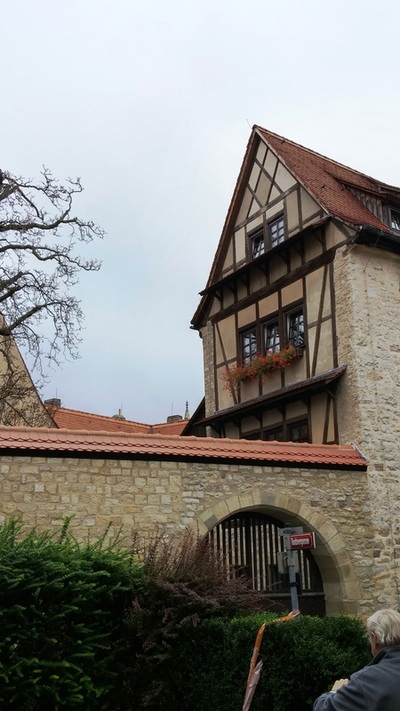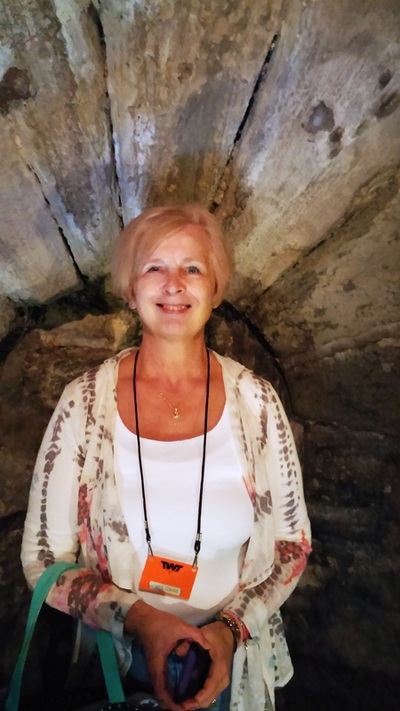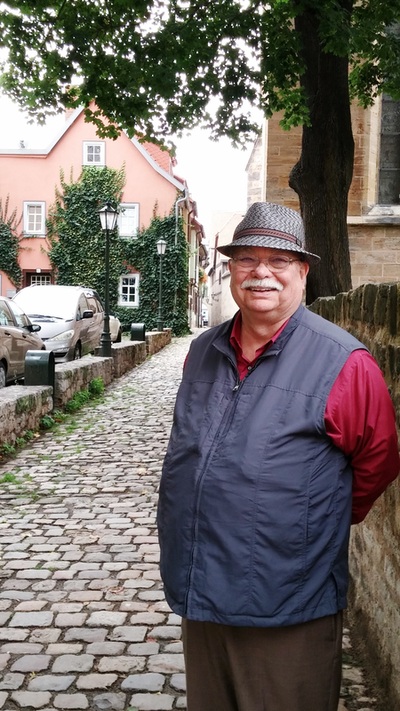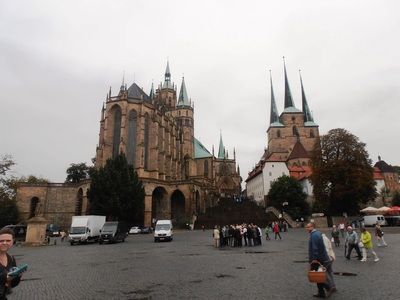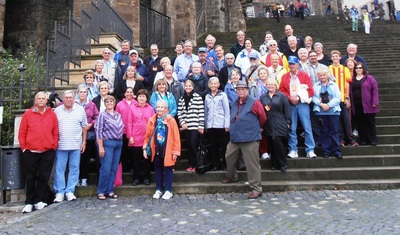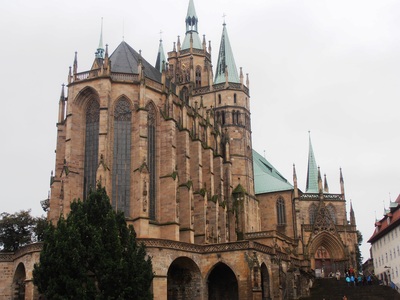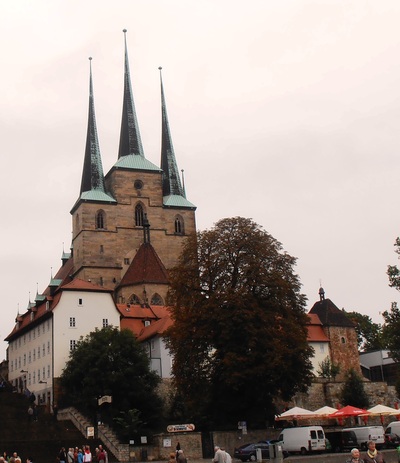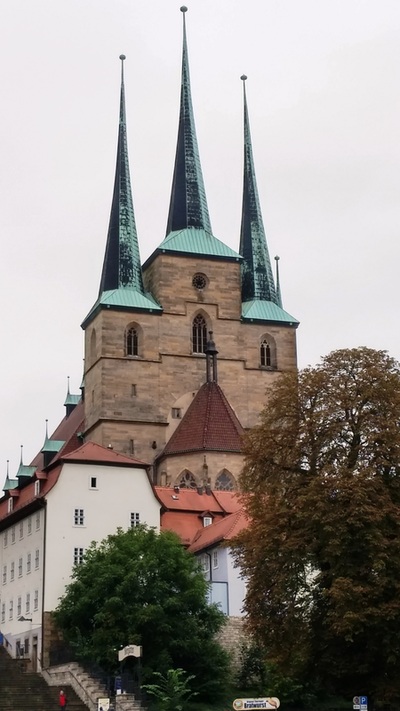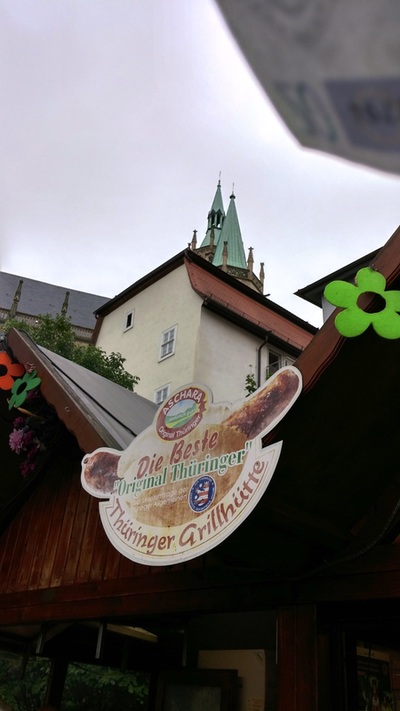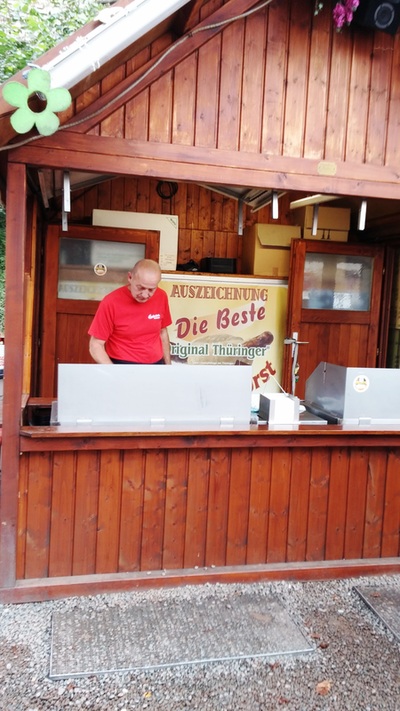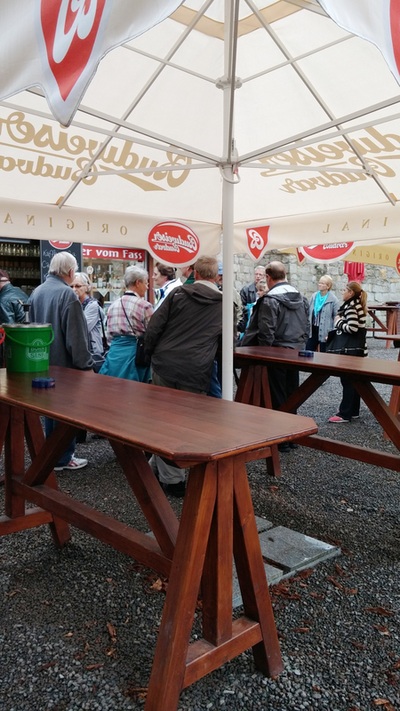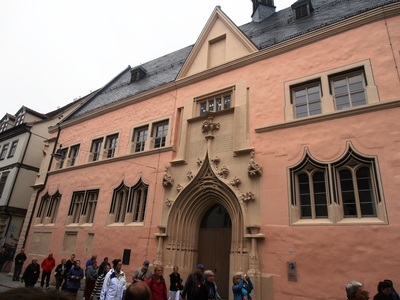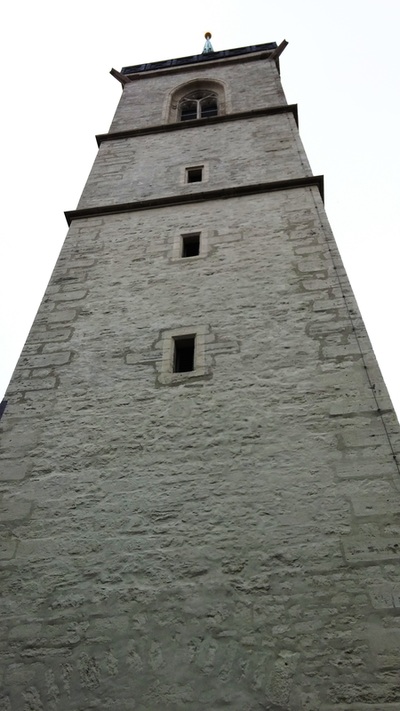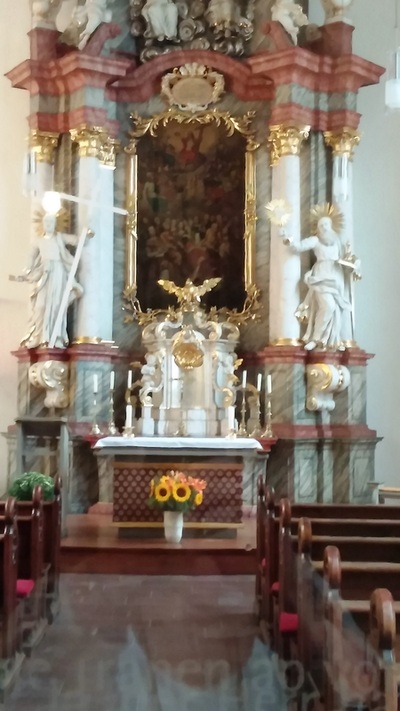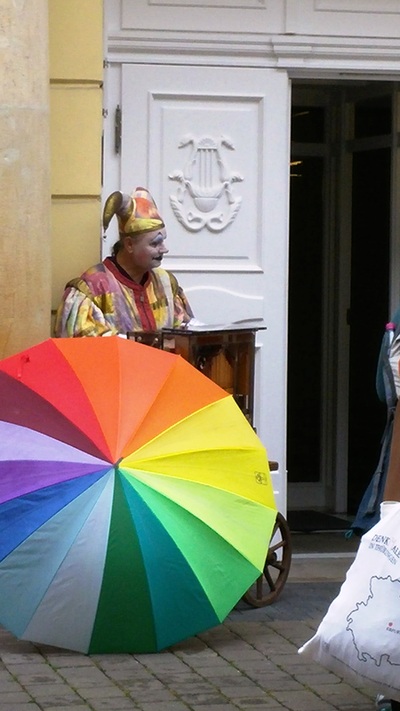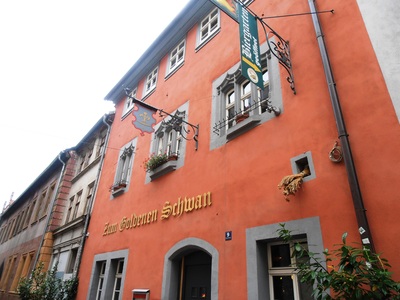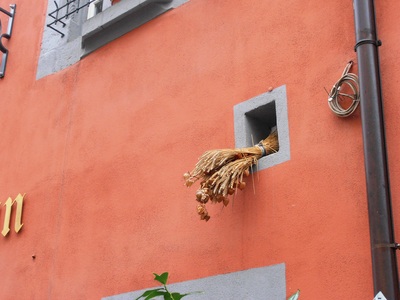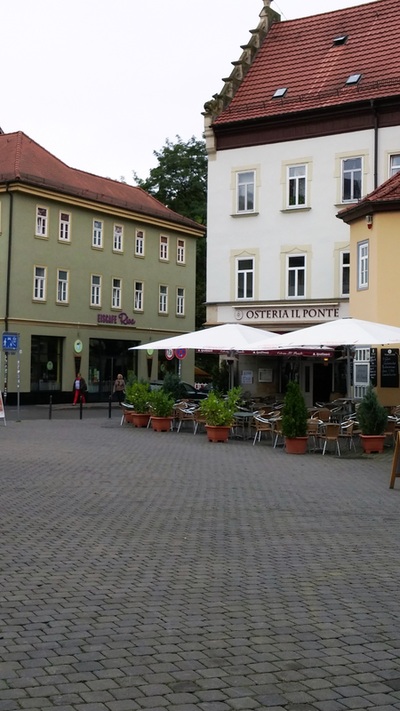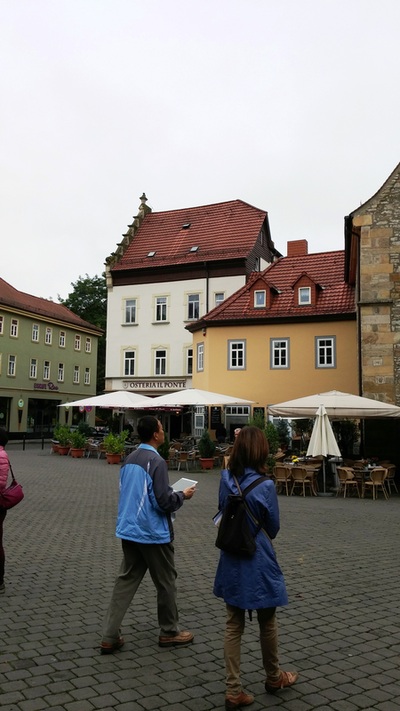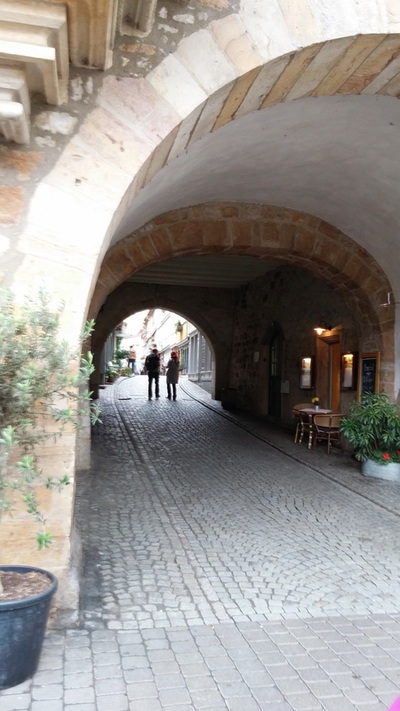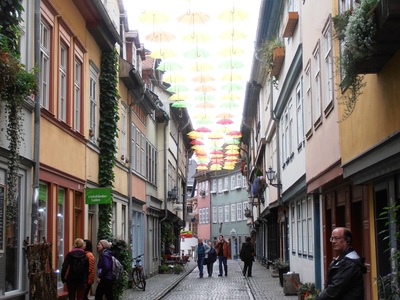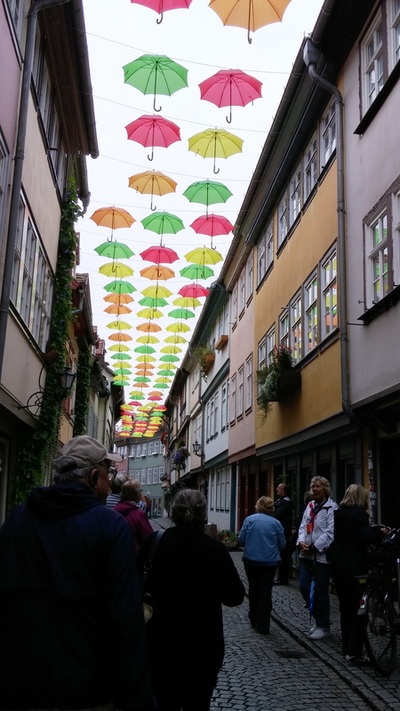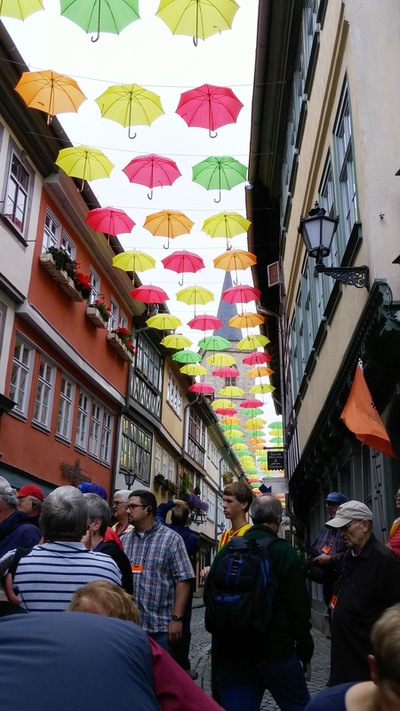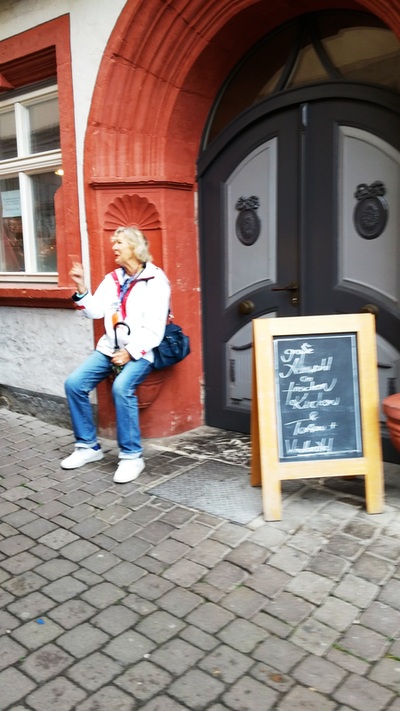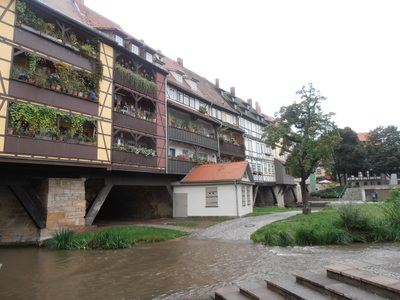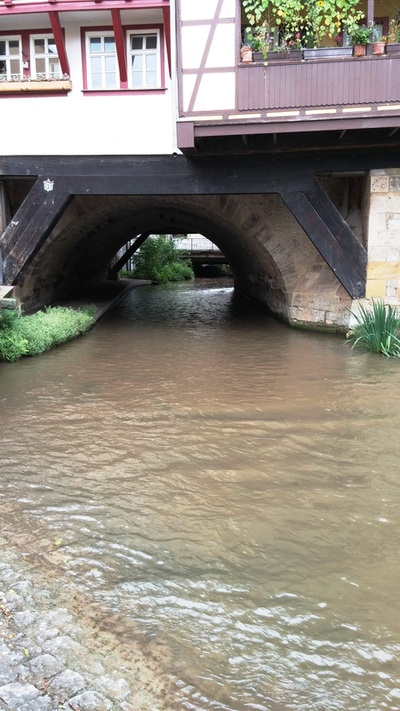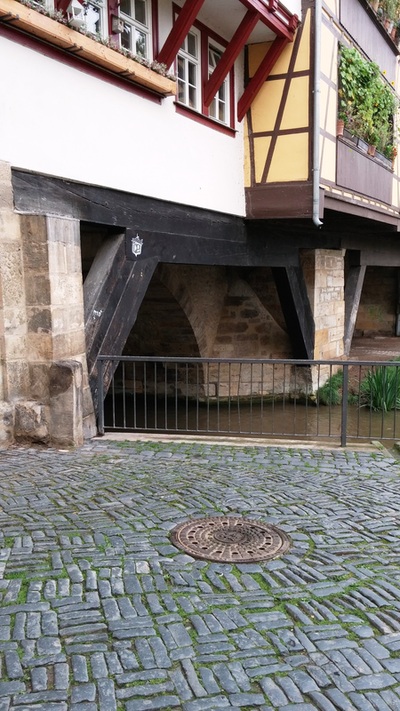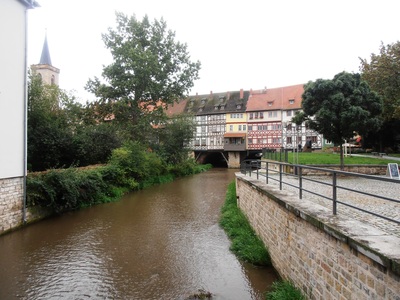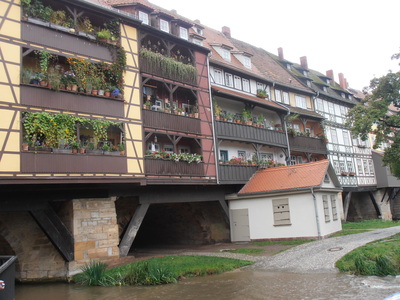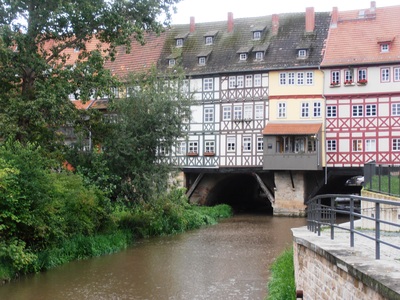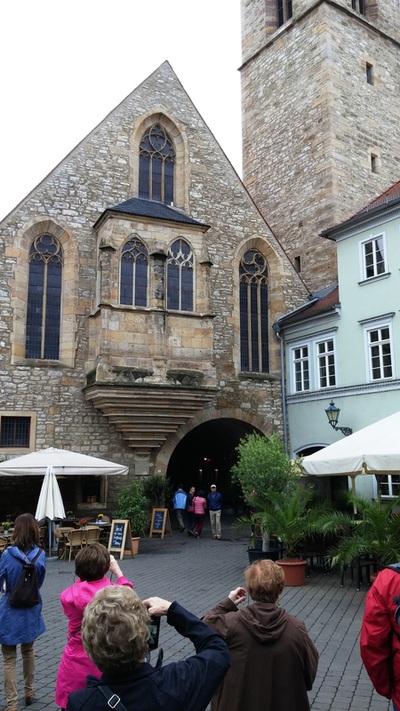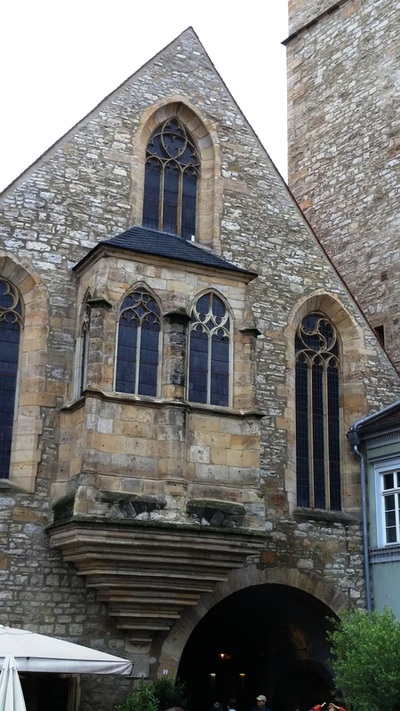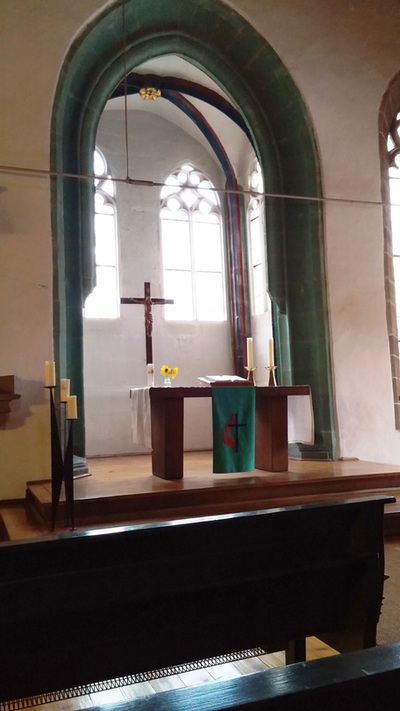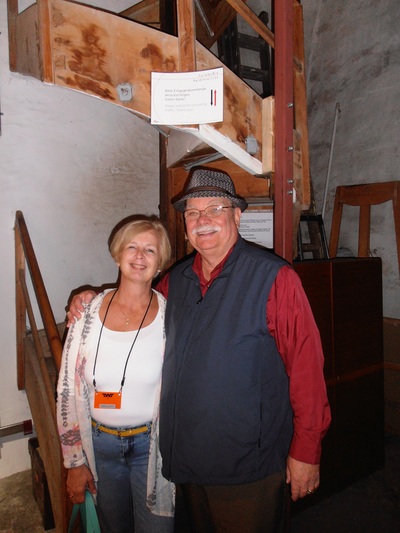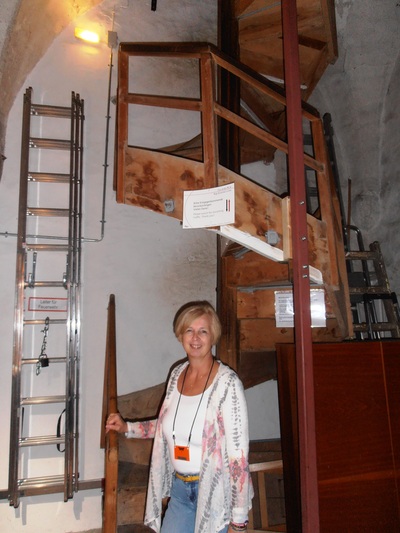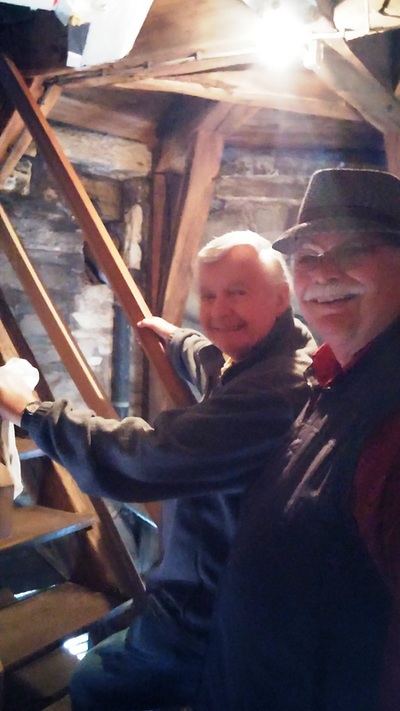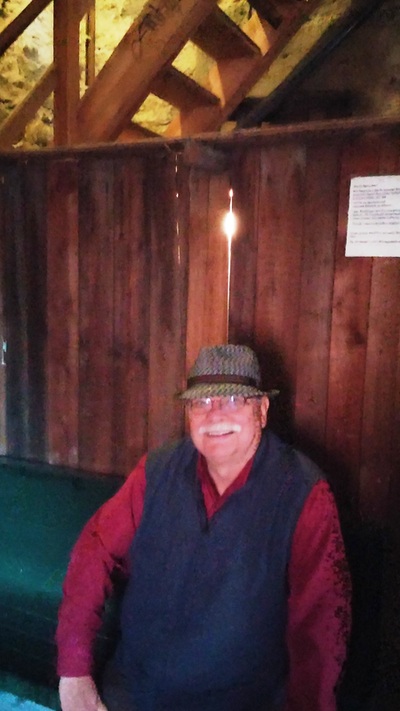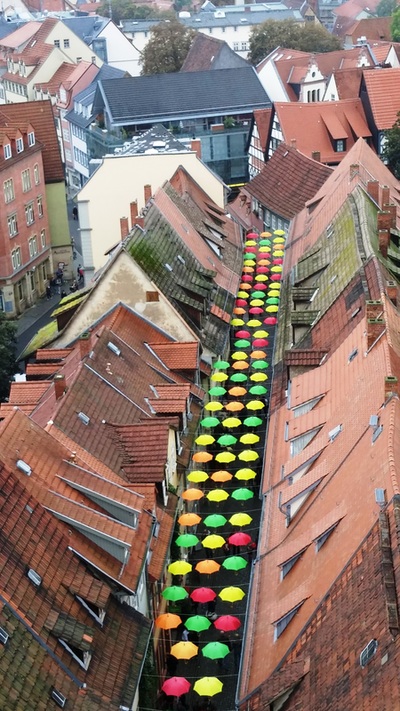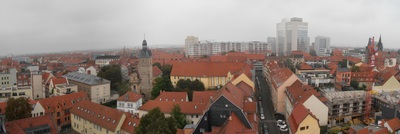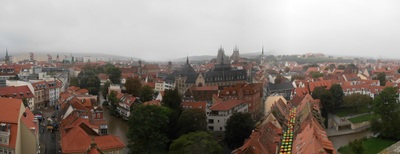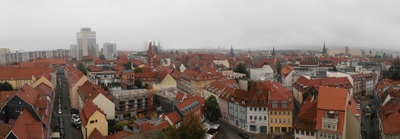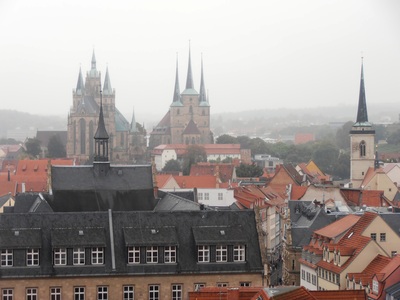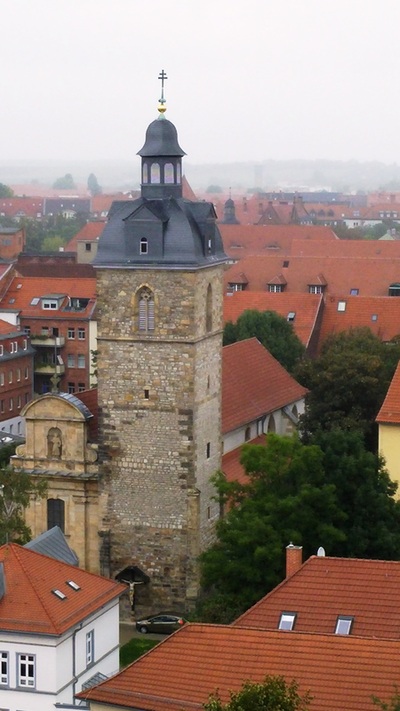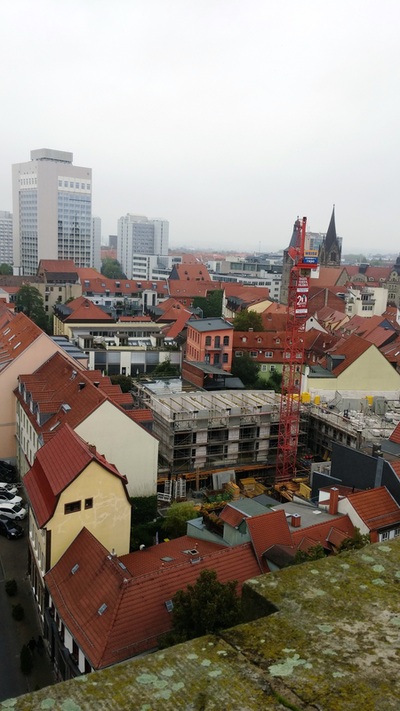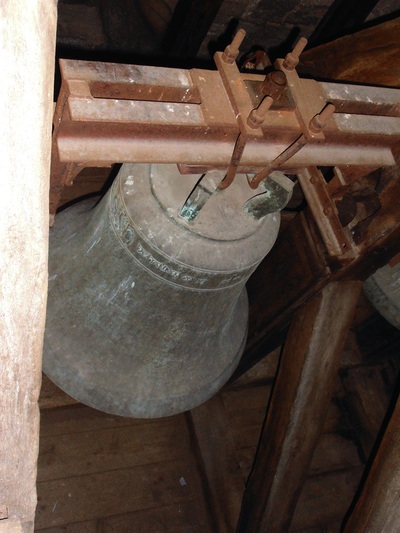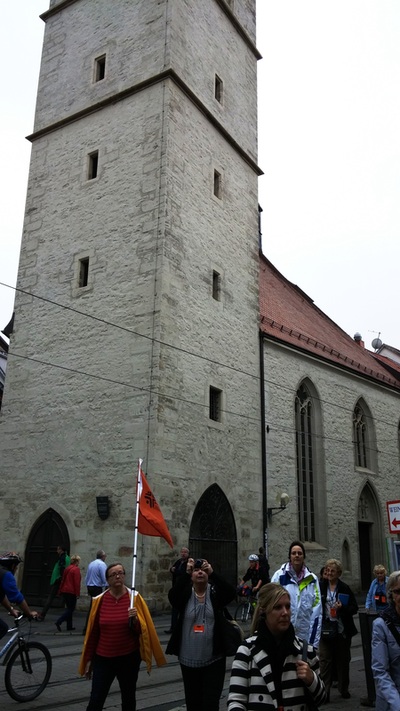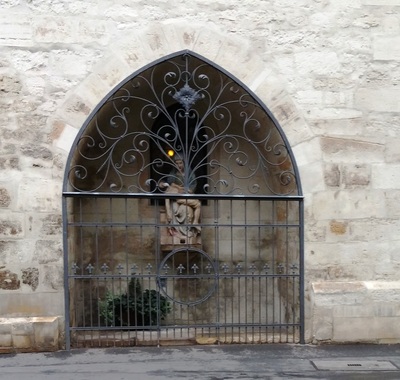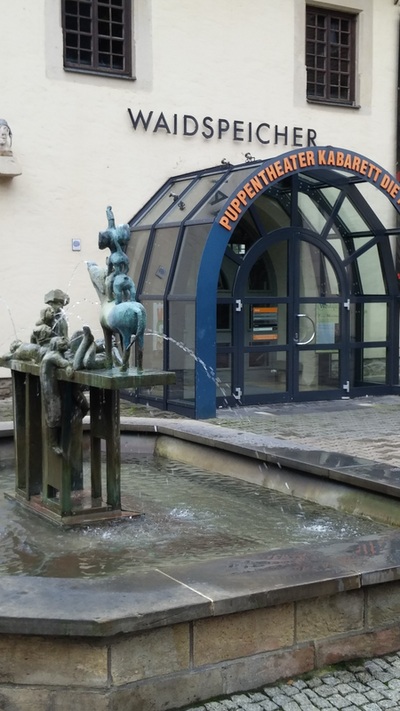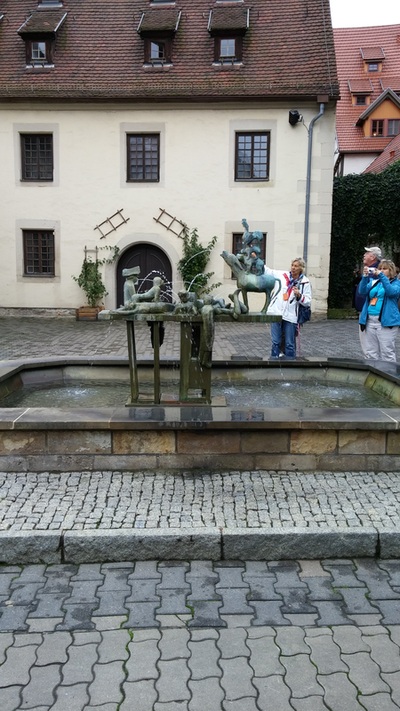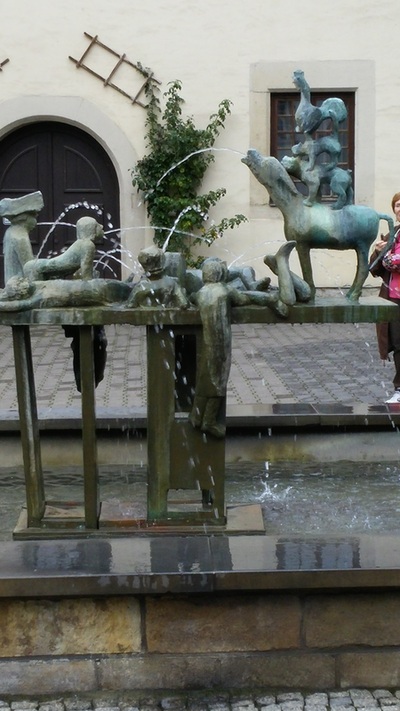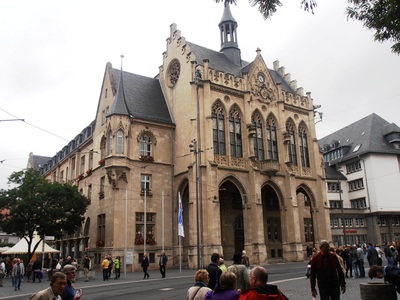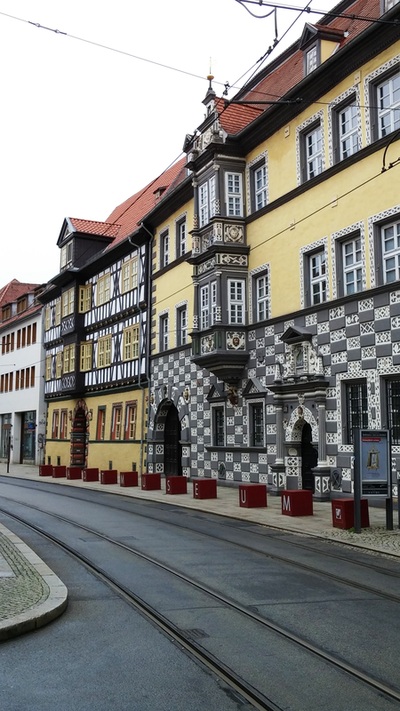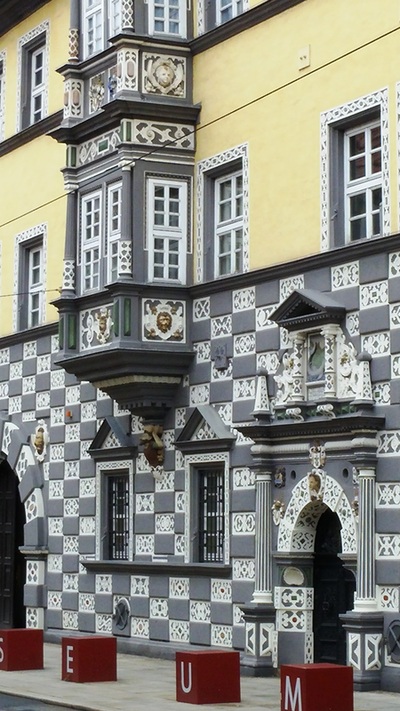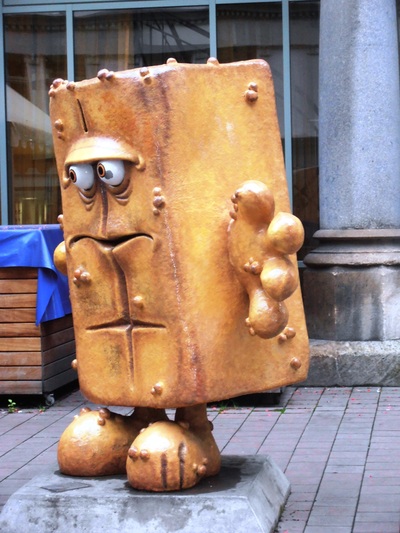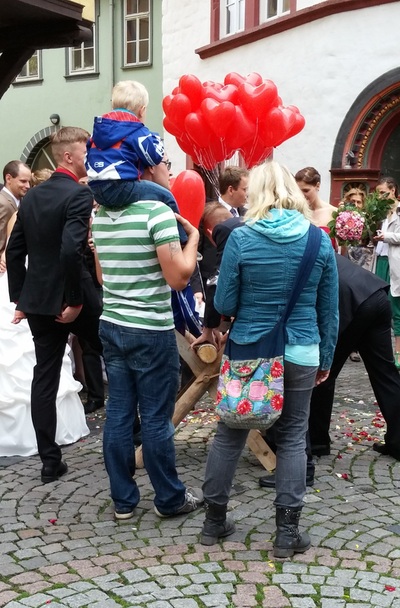Day 6: September 13, 2014
The morning dawned overcast with light rain.
After breakfast we took a guided walking tour of the city.
Erfurt is the capital city of Thuringia.
Notable institutions in Erfurt are the Federal Labour Court of Germany, the University of Erfurt and the Fachhochschule Erfurt as well as the Roman Catholic Diocese of Erfurt with Erfurt Cathedral as one of the main sights. Further famous buildings are the Krämerbrücke, a bridge completely covered with dwellings. Furthermore, the medieval city centre consists of old timber-framed houses and about 25 Gothic churches.
In 1501, at the age of 19, Martin Luther entered the University of Erfurt, which he later described as a beerhouse and whorehouse. He was made to wake at four every morning for what has been described as "a day of rote learning and often wearying spiritual exercises." He received his master's degree in 1505.
In accordance with his father's wishes, Luther enrolled in law school at the same university that year but dropped out almost immediately, believing that law represented uncertainty. Luther sought assurances about life and was drawn to theology and philosophy. Philosophy proved to be unsatisfying, offering assurance about the use of reason but none about loving God.
On 2 July 1505, he was returning to university on horseback after a trip home. During a thunderstorm, a lightning bolt struck near him. Later telling his father he was terrified of death and divine judgment, he cried out, "Help! Saint Anna, I will become a monk!"
He came to view his cry for help as a vow he could never break. He left law school, sold his books, and entered a closed Augustinian friary in Erfurt on 17 July 1505.
In 1507, he was ordained to the priesthood.
The tour concluded at noon when we were free for the rest of the day.
Carol and I decided to grab a quick lunch and revisit the city - spending more time at selected sites.
After breakfast we took a guided walking tour of the city.
Erfurt is the capital city of Thuringia.
Notable institutions in Erfurt are the Federal Labour Court of Germany, the University of Erfurt and the Fachhochschule Erfurt as well as the Roman Catholic Diocese of Erfurt with Erfurt Cathedral as one of the main sights. Further famous buildings are the Krämerbrücke, a bridge completely covered with dwellings. Furthermore, the medieval city centre consists of old timber-framed houses and about 25 Gothic churches.
In 1501, at the age of 19, Martin Luther entered the University of Erfurt, which he later described as a beerhouse and whorehouse. He was made to wake at four every morning for what has been described as "a day of rote learning and often wearying spiritual exercises." He received his master's degree in 1505.
In accordance with his father's wishes, Luther enrolled in law school at the same university that year but dropped out almost immediately, believing that law represented uncertainty. Luther sought assurances about life and was drawn to theology and philosophy. Philosophy proved to be unsatisfying, offering assurance about the use of reason but none about loving God.
On 2 July 1505, he was returning to university on horseback after a trip home. During a thunderstorm, a lightning bolt struck near him. Later telling his father he was terrified of death and divine judgment, he cried out, "Help! Saint Anna, I will become a monk!"
He came to view his cry for help as a vow he could never break. He left law school, sold his books, and entered a closed Augustinian friary in Erfurt on 17 July 1505.
In 1507, he was ordained to the priesthood.
The tour concluded at noon when we were free for the rest of the day.
Carol and I decided to grab a quick lunch and revisit the city - spending more time at selected sites.
